AQA - A Level: Product Design - Paper 2
1/124
There's no tags or description
Looks like no tags are added yet.
Name | Mastery | Learn | Test | Matching | Spaced |
|---|
No study sessions yet.
125 Terms
Arts & Crafts
1880-1920
➜ Traditional craftsmanship using simple forms
➜ Essentially anti-industrial
➜ Appreciation of the beauty of materials (e.g. wood grain)
➜ Hand produced using craft skills (e.g. natural forms of medieval Europe)
William Morris, CFA Voysey, Richard Norman Shaw
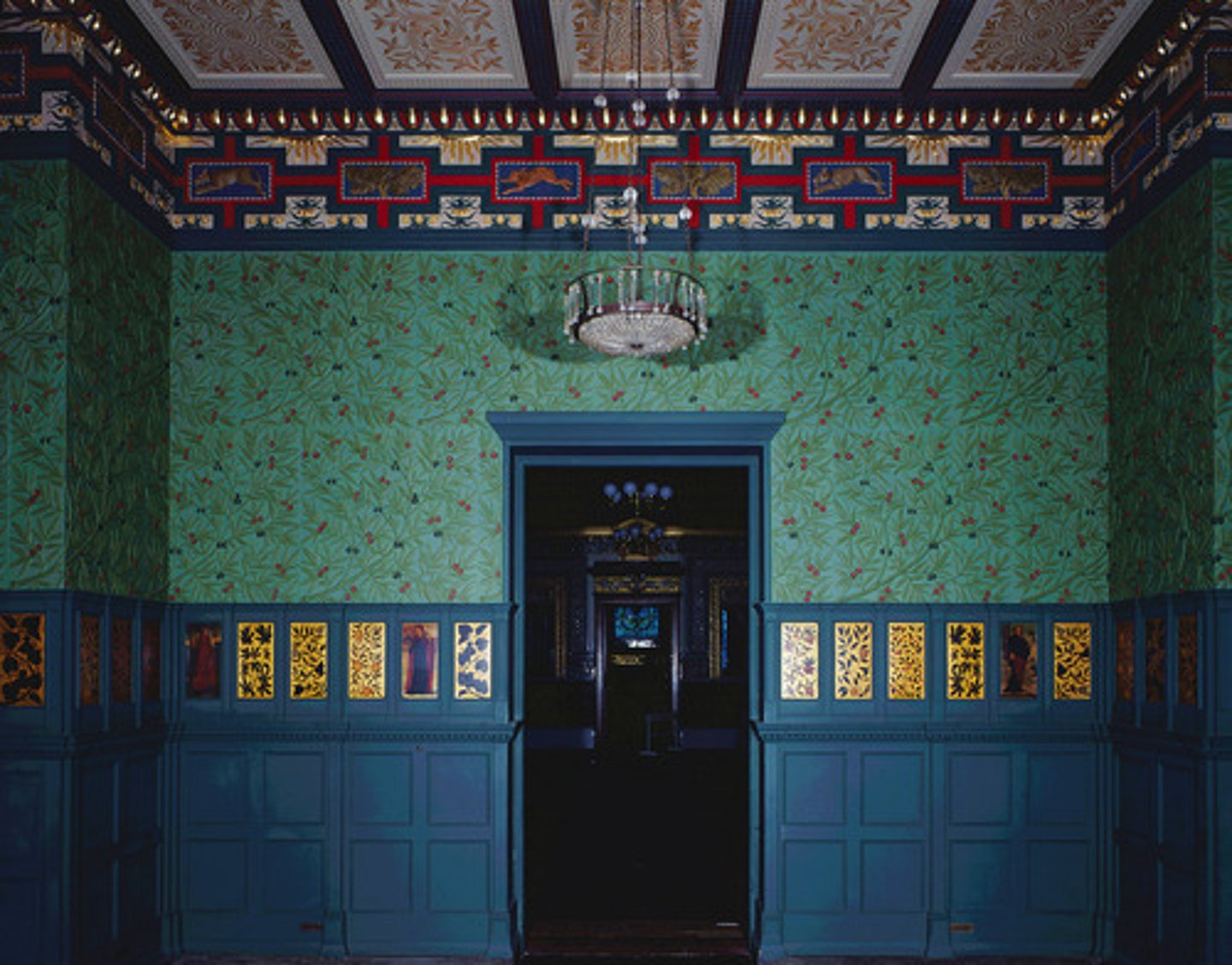
Art Deco
1920-1930
➜ Represented luxury, glamour, exuberance and faith in social and technological progress
➜ Sunburst motifs - commonly seen in architecture and surface patterns
➜ Ziggurat (Stepped pyramids) - e.g. Empire State Building
➜ Simple geometric shapes
Clarice Cliff, Eileen Gray, Alvar Aalto, Walter Dorwin Teague

Modernism/(Bauhaus and De Stijl)
1919-1933
➜ Form follows function
➜ Embraced the machine age
➜ Used geometrically pure forms
➜ Created everyday products for everyday people - used mass-production
Modernism: JJP Oud, Piet Mondrian, Gerrit Rietveld, Robert van't Hoff
Bauhaus: Walter Gropius, Marcek Breuer, Mies Van Der Rohe, Marrianne Brandt

Streamlining
The development of products using flowing curves and chrome detailing inspired by the increased study into aerodynamics in the early twentieth century
➜ Seen in car design as early as 1920's, application of streamlining to household objects was seen as modernist and developments of materials such as Bakelite enabled replication of curves.
Raymond Loewy, Norman Bel Geddes, Henry Dreyfuss
Post-modernism
1980s
➜ Bold, colourful and playful designs - used bright colours
➜ Simplistic juxtapositions of geometric positions - used geometric forms in seemingly random positions
➜ Challenging forms that compromised on function - sculptural designs took precedence over functionality
Memphis group, Mark Newson, Danny Lane, Phillipe Starck
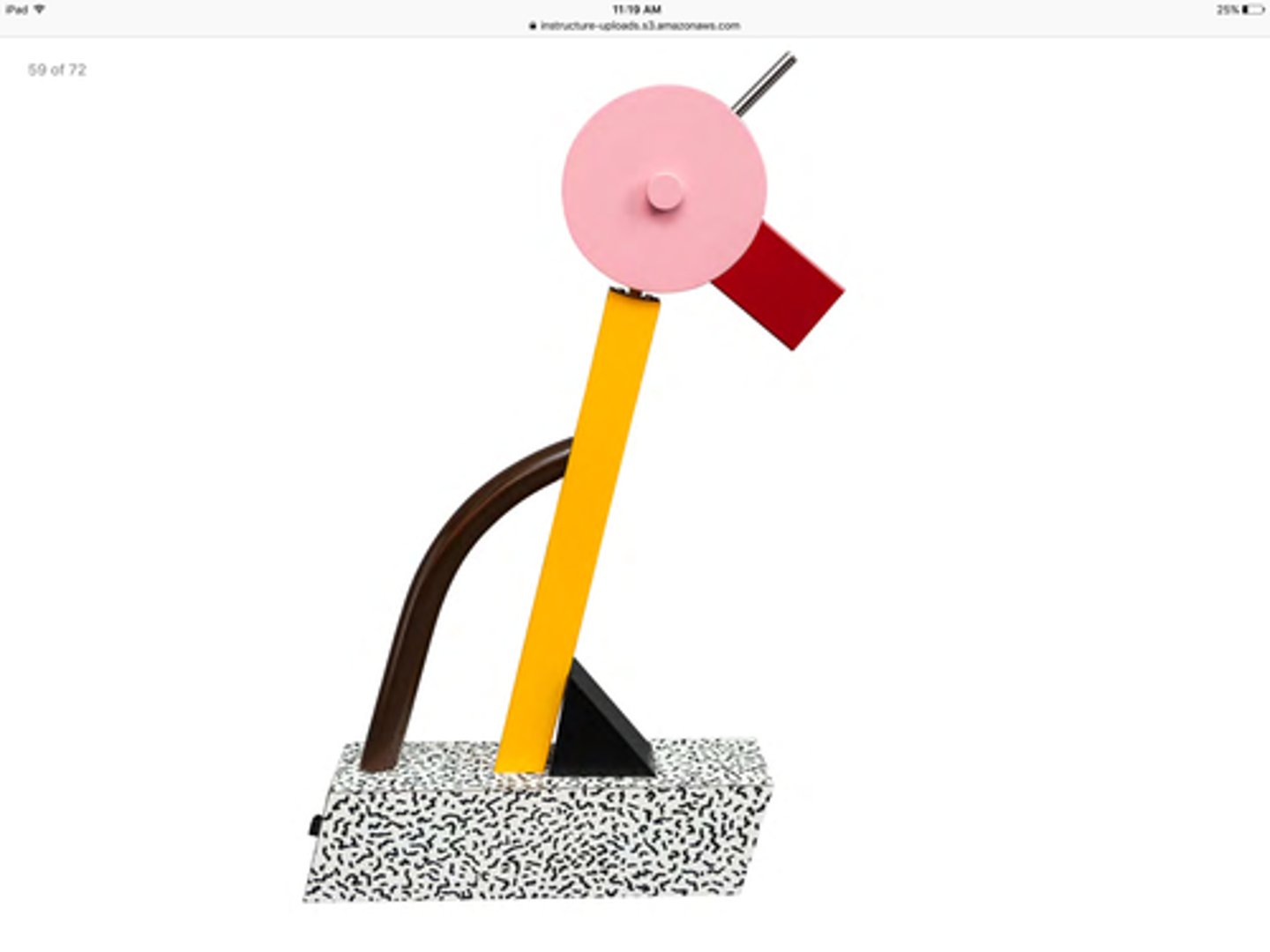
Memphis design
A late-twentieth-century design group who challenged modernist design views
Philippe Starck
French Product Designer
➜ Works on kitchenware - aesthetics before function
➜ Work in architecture and interior design - "democratic design", affordable and desirable products for population rather than elite
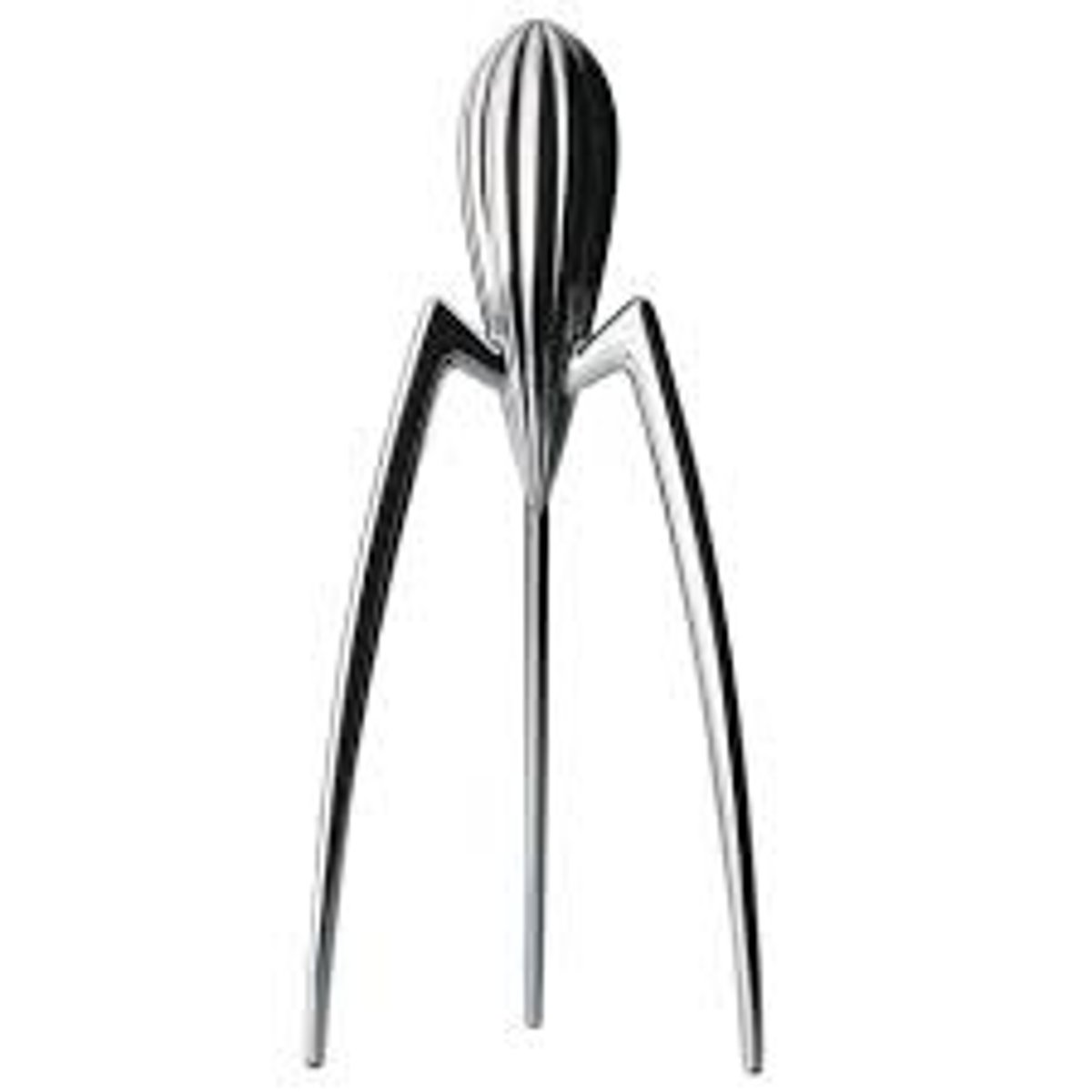
Juicy Salif (Phillipe Starck)
Single piece aluminium casting, functions successfully.
- High centre of mass, becomes unstable during use
- Head of juicer is only large enough for a lemon
+ Form is striking so it's likely to be displayed rather than sorted like other juicers
+ The legs prevent juice from running down the sides due to angle and wide base means that a glass can be placed underneath
James Dyson
British Design Engineer
➜ Designs household products in innovate ways
➜ the Dyson vacuum cleaner - using contrasting colour schemes, changing dust reduction systems
➜ Wheelbarrow with the ball wheel
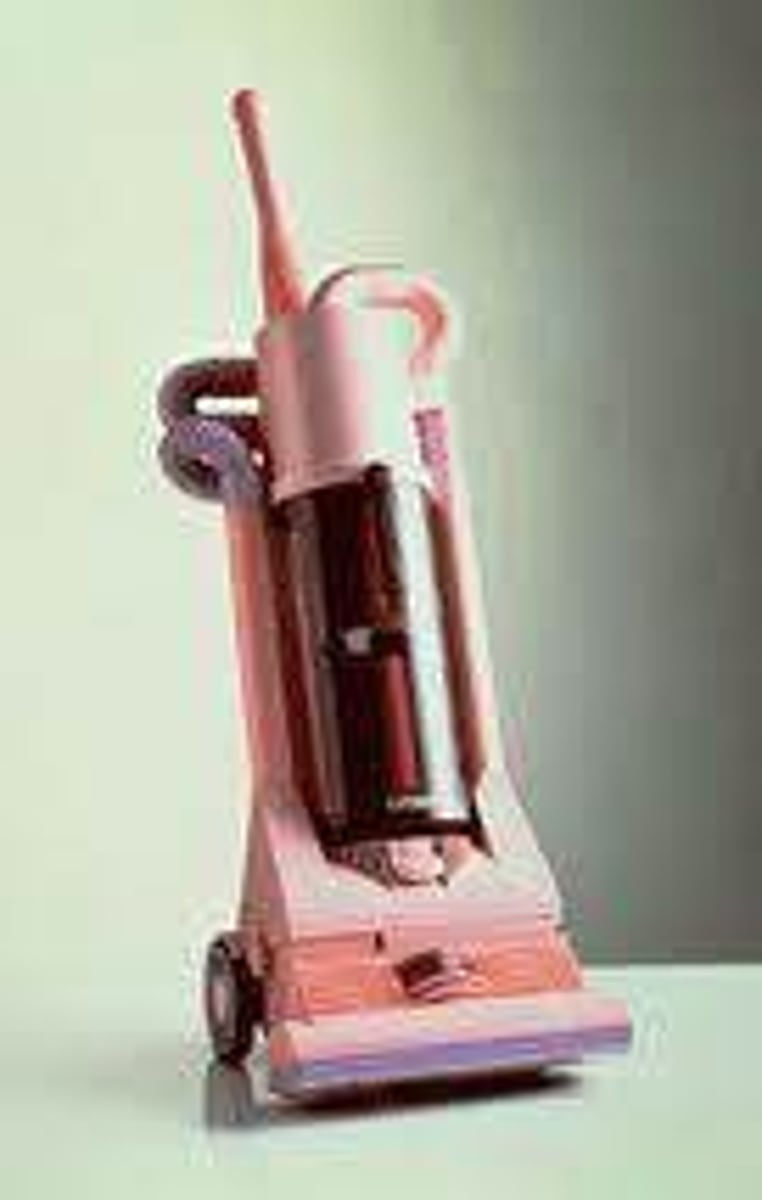
DC01 Vacuum cleaner
➜ Introduced bagless dual cyclone cleaning system
➜ Colour scheme aids used
➜ 3d sculpted form based on flow of air
➜ Injection moulded ABS apart from PC dust bin
➜Uses many integral fixings, allows disassembly and aids maintenance
➜ Clear polycarbonate bin shows off dust
Margaret Calvert
British Graphic Designer
➜ Developed the signs and fonts on UK road signs w Jock Kinneir
➜ Provided simple and clear communication with motorists through developing stylised silhouette forms
➜ Mix of upper and lower cased letters because the mix was proved to improve readability and high speeds through testing
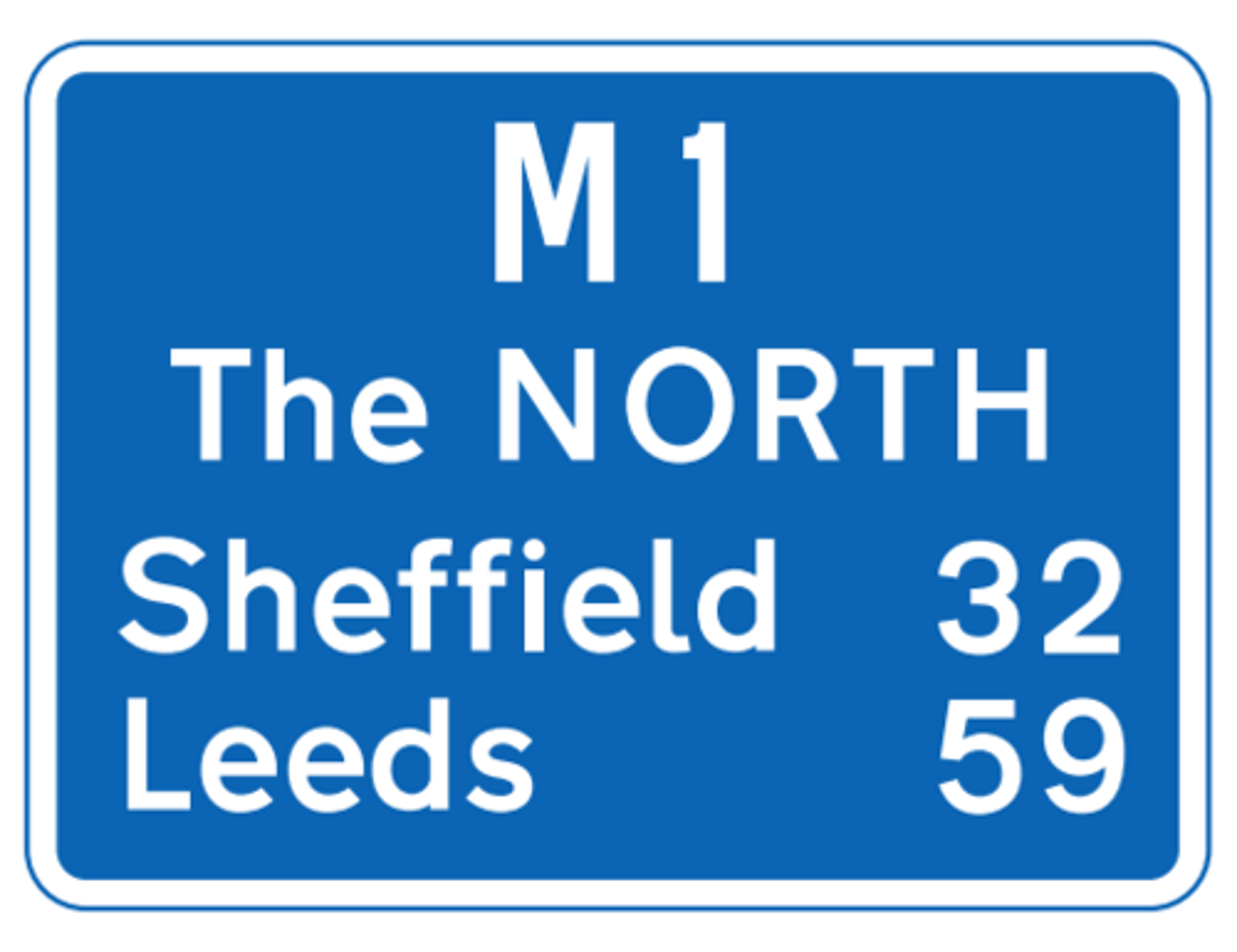
Dieter Rams
German Functionalist Designer (less but better)
➜ Worked with Braun and did what Bauhaus did with furniture for consumer electronics, took ornamental wooden casings and replacing them with functional minimalist designs in white and grey
➜ Developments heavily depended on technological developments like the transistor and thermoplastics
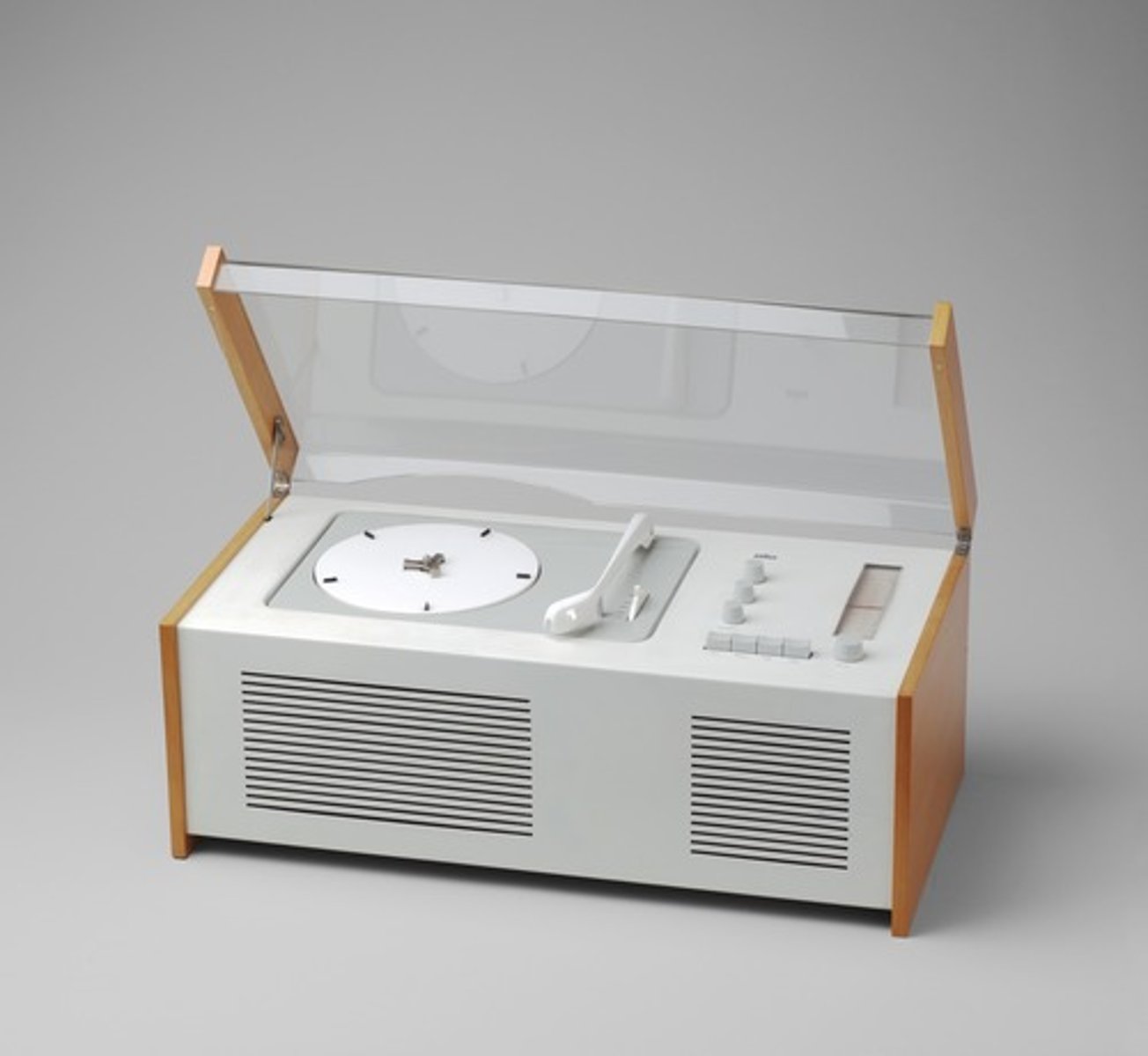
Dieter Ram's key principles of good design
Good design is:
➜ Innovative
➜ Understandable
➜ Unobtrusive
➜ What makes a product useful
➜ Thorough down to the last detail
➜ Honest
➜ Has longevity
➜ Environmentally friendly
➜ Aesthetic, 'form follows function'
➜ As little design as possible, minimalist
Charles and Ray Eames
Modernist designers
➜ Moulded plywood and polymer furniture
➜ Paved the way for single-form seating in both plywood and polymers
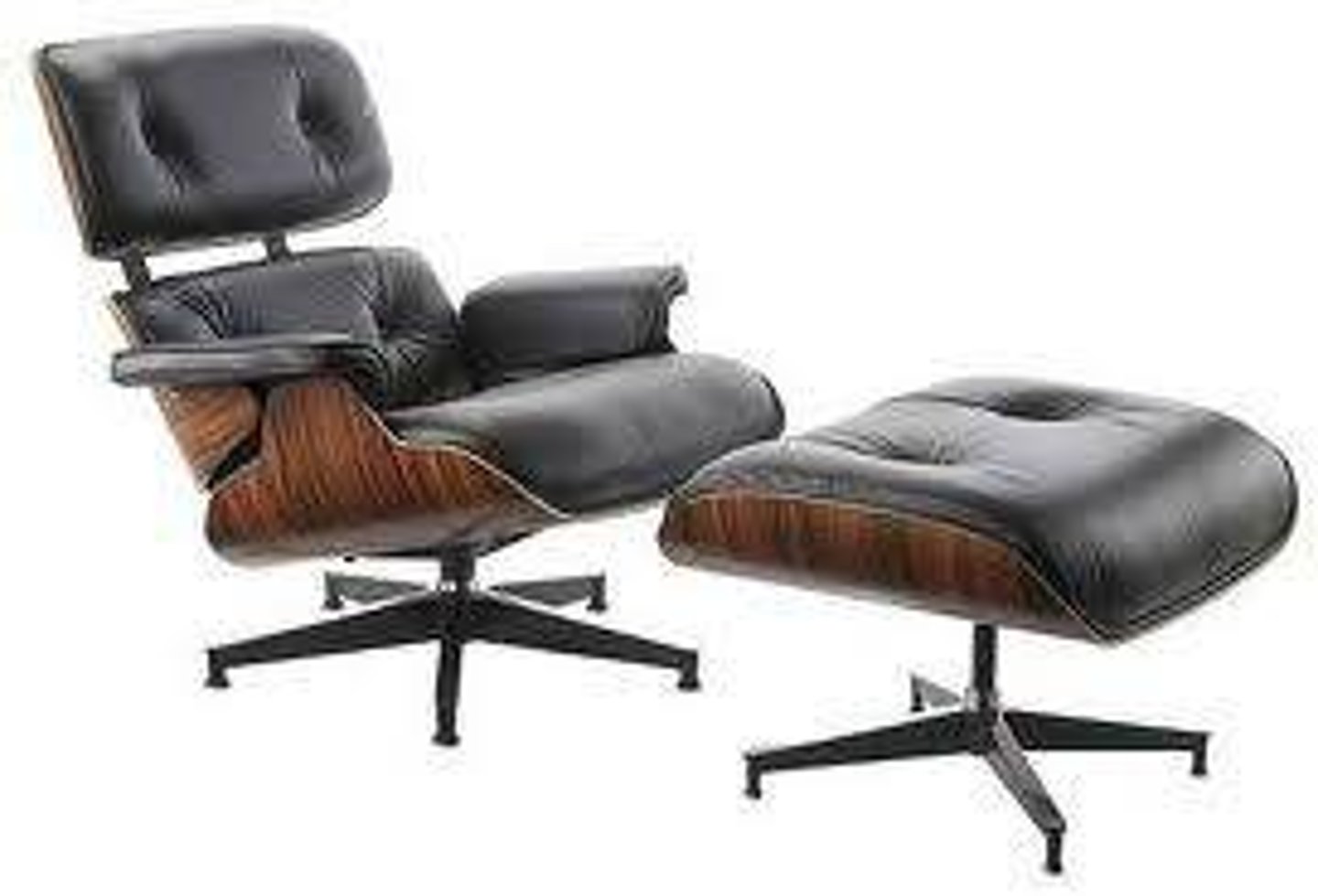
Lounge Chair Wood (LCW)
Charles and Ray Eames
➜ Evolved form their work with the USA navy, developing leg splints from laminated plywood forms.
Marianne Brandt
Bauhaus designer
➜ Developed geometrically pure kitchenware products, successful at a time when Bauhaus products typically were not
➜ Simplicity of design ensured longevity and relevance in modern design
➜ Embodied Bauhaus
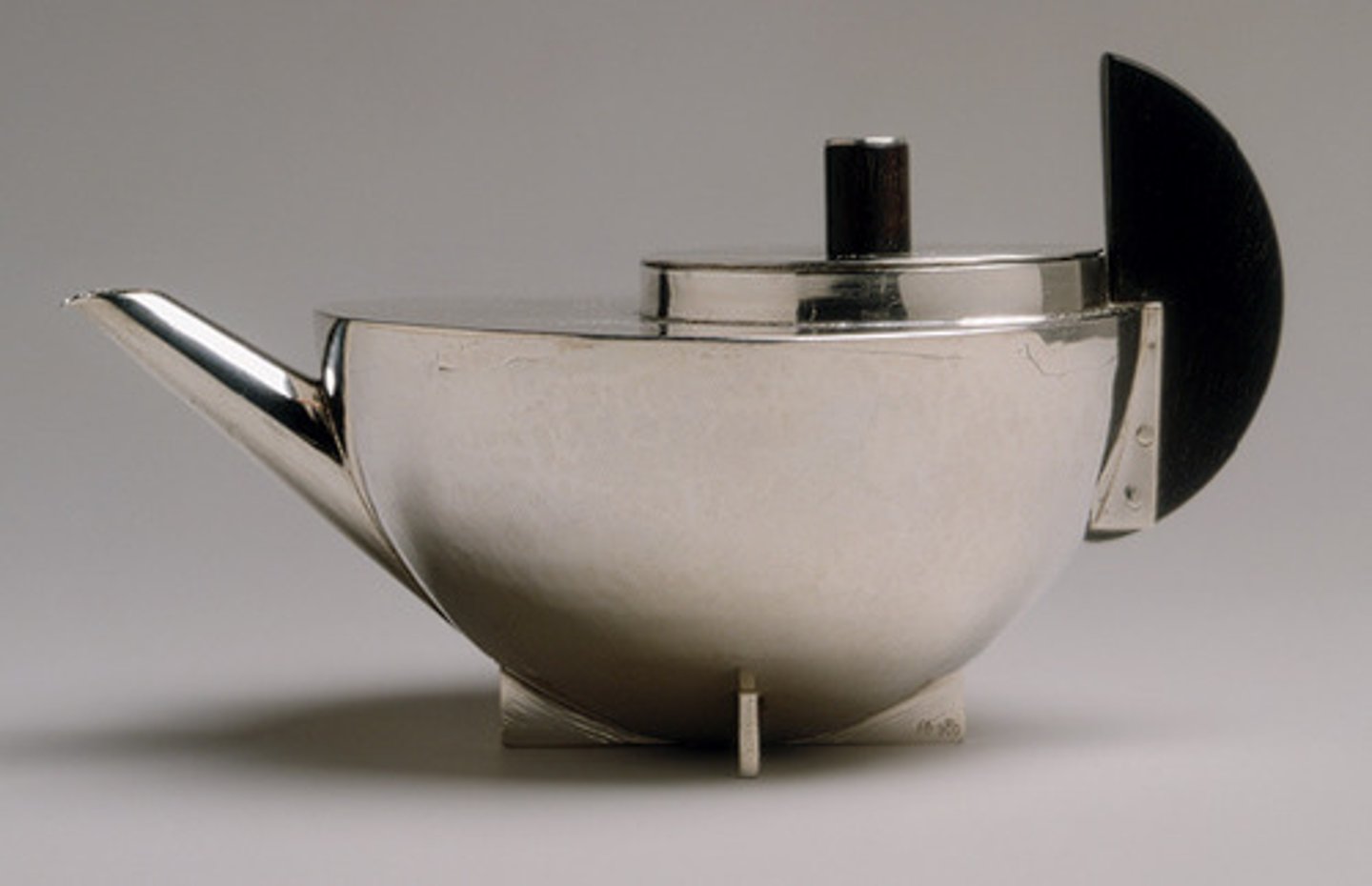
Post-WWI
➜ War caused mass production and machinery to be used in factories.
➜ Bauhaus designers embraced the industrial manufacturing methods and materials of WWI, such as tubular steel, to revolutionise the design of and the mass manufacture of furniture.
Socio-economics
How society and the economy interact to create particular circumstances
WWII
Due to the war effort and bombing, there was a shortage of timber. Furniture had to be designed that were
➜ Basic, used minimal amounts of locally-sourced wood, and traditional techniques
➜ Utility products.
Utility products
Post-WW2 basic products that were often rationed
Council of Industrial Design (COID)
Post WWII British organisation set up to improve design standards and competitiveness
Post-WWII
The Council of Industrial Design (COID) was set up in post-war Britain to improve design standards and competitiveness.
➜ Allowed for an increase in the range of decorative and fashionable products due to the development in materials, manufacturing, and technology, in addition to growing influences from abroad.
Microelectronics
Miniature electronic devices and systems facilitated by the development of smaller ICs.
➜ The newfound processing power of materials like silicon, and its ability to have a small size, allowed for integrated circuits (ICs) to make a significant impact on design and designing.
➜ They have made computers capable of carrying out millions of calculations at high speeds; its made products that were previously inconvenient, bulky and energy intensive possible with the incorporation of microelectronics
➜ Moore's law
Sustainable
Something that has the minimum impact on the environment
Glulam
The use of several pieces of timber glued together to create a strong composites for use in buildings, bridges and other structures.
➜ Its strengths stems from the careful choice of laminates eliminates the defects created by knots
➜ It has a better strength-to-weight ratio than steel, and is much cheaper as it uses less energy to create.
➜ Also sustainable.
Kevlar
An artificial fibre that has tremendous toughness and tensile strength due to its density and chemical bonds.
➜ It's also extremely lightweight and used in things like bulletproof vests and puncture-resistant tyres.
Precious Metal Clay (PMC)
Consists of precious metals bound together with a pliable material medium so that they can be shaped into jewellery and other products.
➜ They are then heated up, where the clay sets and the material shrinks a tiny amount - which needs to be factored into the design.
Nanomaterials
Any number of uses
➜ Could be used in nanoelectric devices, to coat materials, and has medical and energy applications.
➜ They have great potential for advancement and improvement in product design, but they are not recyclable and can be quite toxic.
Electrohydraulic forming
Forming a complex sheet metal parts using a single sided former by using a shockwave generated by an electrical spark in a tank of water. Similar procedures use explosives.
➜ Only needs one sided former rather than the two needed for a conventional press
➜ It can produce deep, complex and fine shapes
➜ Deals with a range of materials
➜ Single stage process, is very fast
➜ Material is evenly distributed so no weak spots
Advanced 3D printing of metals
A laser is used to fuse metal particles layer by layer to build the required item. Uses Direct Metal Laser Sintering which is a form of Selective Laser Sintering.
➜ It can create strong, lightweight parts with complex features, such as internal voids, and is useful when making prototypes.
Fibre-injection moulding
Pellets of glass/ carbon fibre filled polymers such as polyamide (nylon) are used. Reinforced fibre roving is incorporated into the polymer being moulded.
➜ Popular in the automotive industry - produces parts that are strong, stiff, lightweight, and economical.
➜ They are sustainable as they use carbon fibre offcuts and waste from conventional injection moulding.
Laser beam welding
The intense heat of a laser beam is used to join multiple pieces of metal (increasingly adopted for automotive applications)
➜ It's fast and capable of producing narrow and deep welds, as well as being able to weld a wide range of materials.
➜ Can be combined with other types of welding to increase their speed and efficiency
➜ Welds a wide range of metals and is capable of welding dissimilar metals
➜ Area affected by heat from the laser is narrow, minimises distortion
➜ Weld is smooth enough to require no further finishing processes
➜ More accurate than other methods
➜ Unnecessary to use filler rods
➜ Small, thin components can be welded with less likelihood of damage
➜ However, it has a high initial cost, health and safety needs to be considered, needs a clean environment to protect the optics
Physical Vapour Deposition
Method of producing thin films of material or coating products with a finishing surface (alternative to electroplating)
➜ Works by heating the base material so that it vaporises, passes thorugh a vacuum to condense on the target material, depositing a thin layer of required material
➜ Used for the production of semi-conductor components, food packaging, machine tool cutting tips and decorative products
➜ Related process called Chemical Vapour Deposition for similar purposes but relies on chemical reactions instead
Internet of Things
The connection of a range of devices over networks such as the Internet and WIFI.
➜ Smart fridges with cameras and RFID tags on internally stored produce can be applied to a JIT manufacturing system instead
➜ Facilitates a dynamic response to anything that changes in the system (a machine fault so schedules need ti be reorganised)
➜ Facilitates "predictive maintenance" whereby sensors constantly monitor the condition of elements of a machine: the data collected would indicate when servicing, repair or replacements of various parts when it is needed and this would be automatically scheduled in
Advancements of CAD/CAM
➜ Increased the potential for designing and making products with the help of computers e.g. cloud-based software and VR.
Ethical
Something considered by society to be morally fair
Migration
A movement from one country or region to another, relocating with requirements that can be be responded to by designers, companies and NGO's such as
➜ Food and water
➜ Clothing
➜ Housing
➜ Medical care
Practical Action
An international NGO charity that has over 100 projects worldwide that are appropriate technology e.g. micro hydro-electric power stations to generate electricity so people can work their way out of poverty.
➜ Alleviated poverty in Sri Lanka with the 3 ring concrete compost bin made by locals.
➜ IP can sometimes be a hindrance to the development of affordable products since priority for owners of the IP would be financial reward rather than altruism and PA prefers an "Open Design" approach.
Free and open source software (FOSS)
Software that is available free or at a very low cost and can be changed by the user
Fairtrade
A social movement to encourage the ethical treatment of farmers and workers in developing countries
Design Process
A system to organise designing and making a prototype of a product
Model
Either a 3D CAD drawing or a physical mock up used to communicate designs and making prototypes
Specification
A list of key points that a designer follows when developing designs and making prototypes
Primary research
Investigation techniques that use first-hand sources such as interviews, observation, disassembly of products
SCAMPER
A technique of modifying existing designs to create new ideas
➜ Substitute - change materials, components, finishes etc
➜ Combine - mix ideas or parts of ideas together
➜ Adapt - alter the design, use part of another idea, change the function, adapt mechanisms or useful parts
➜ Modify - change the shape of the design or part of it, increase or decrease the size
➜ Put it to another use alt use of design, different functions?
➜ Eliminate - remove and reduce parts, simplify
➜ Reverse - turn the design inside out or upside down
Illustration
Can be used in the design process
➜ Isometric to sketch design ideas
➜ One-point perspective to show buildings or room interiors
➜ Two- point perspective to draw objects from a range of different viewing angles
➜ Exploded views are sued to show the relationship of the parts of the product and how they assemble
➜ Marker renderings are used to represent colour and materials/finishes on design drawings
➜ Sectional views are used to show the cross section of products - useful in showing hidden detail such as holes and slots
➜ Orthographic is used to show the front, plan and end view of an object - usually drawn to scale
➜ Flow charts are used to show the sequence of a manufacturing process - particularly useful in illustrating the QC stages
➜ 3D CAD is used to give an artist's impression of designs or to make a virtual model.
➜ 2D CAD is used to draw parts for cutting out/machining on computer controlled equipment, or to produce working drawings/ orthographic projections.
Culture
The combined ways of living developed by a group of people that is passed from generation to generation
Crowd funding
The practice of funding a project or venture by raising small amounts of money through donations from a large amount of people, typically raised via the Internet.
➜ An alternative source of finance for altruistic product design projects.
Inclusivity
Consideration of the needs of the widest possible range of people
Product life cycle
The stages a product goes through:
➜ Introduction
➜ Growth
➜ Maturity
➜ Decline and replacement
Introduction
The product is launched, usually with a lot of marketing and publicity around it. Sometimes companies will try and convince its customers that they need to get their latest product with the new features (phones, etc)
Growth
Once the product is on the market, sales are expected to grow due to customers buying the latest version. Advertising plays a key role - showing the benefits of the new product
Maturity
Eventually, the sales will reach its peak - it's important for companies to prolong this stage as much as possible to reap the most sales from their product
Decline and replacement
Sales will eventually decline, and the product is removed from sale usually only once the replacement model is on the market and selling well. Customers may need to replace products because spare parts aren't available, it being unable to run the latest software, or because of planned obsolescence.
Safe working practices
Keep the person doing the work, and those nearby, safe and free from harm
Accuracy
The amount of conformity of a measurement to the required value
Tolerance
The acceptable upper and lower limits of a measurement
Measurement
The process of using tools to check existing dimensions
Dimension
The measured distance of a straight line between features of a part/product
Marking out
The transfer of designs onto pieces of material or parts
Datum
A surface/edge used as a reference from which measurements are taken to increase accuracy
Jig
A device used to control the motion of a tool, such as a drill relative to a workpiece
Fixture
A robust frame with holding points to hold components in place while a manufacturing process occurs
Template
A rigid shape/pattern used to transfer a design onto a workpiece to ensure consistency
6 Rs
Reduce, reuse, recycle, rethink, repair, refuse
Reduce
Cutting down the amount of material used in the product/packaging
Reuse
The ability to reuse the product for the same/another purpose at the end of its life
Recycle
Converting waste products into new materials for new products
Repair
The ability to fix a product when it breaks, rather than throwing it away
Rethink
Rethinking the way a product is designed and manufactured to be more efficient
Refuse
Exercise consumer choice as to whether they buy a product or not
Total quality management (TQM)
A project management system focussing on QA through the involvement of the workforce in continual improvement
Scrum
The leading agile development methodology for completing projects with a complex, innovative scope of work. Daily scrum updates with feedback and issues are discussed to help progress, distribution of tasks can be updated based on the issues.
➜ Team can respond quickly to changing customer demand due to regularity of feedback meetings
Quality assurance (QA)
The procedures and policies put in place to reduce waste and ensure manufactured products are produced accurately within tolerances
Lean manufacturing
A systematic approach to production which aims to eliminate all waste from product production.
TIMWOOD (Lean manufacturing)
Waste is split into 7 forms, using the acronym TIMWOOD:
➜ Transport - reducing the distance a product has to travel reduces the risk of damage and loss
➜ Inventory - JiT - reduce the inventory on site as any stock held on site is at risk of damage and loss in value
➜ Movement - when assembling products, any unnecessary movement increases product time and so should be minimised
➜ Waiting - reducing the amount of waiting time for other processes to finish in the production line
➜ Over production - producing too much of a product requires more storage, and some products may never be sold, wasting the time and money put into the materials and production
➜ Over processing - using the correct equipment on each manufacturing process - if something isn't needed, then don't get it (e.g., machinery having unnecessary features)
➜ Defects - any defective products must be removed
Six Sigma
A set of techniques to minimise defects
DMAIC (Six Sigma)
➜ Define - what's the issue?
➜ Measure - take steps to measure the extent of the issue
➜ Analyse - determine where the issues occur
➜ Improve - introduce procedures to fix the issues
➜ Control - ensure the procedures are implemented through QA
Lean Six Sigma
Combines TIMWOOD and DMAIC together, minimises defects and waste.
Critical path analysis
A project management system used to analyse all individual stages within a project and to effectively plan the time-efficient completion of each element within the schedule.
Quality control
The monitoring, checking and testing of materials, components, equipment and products throughout production and to adhere to QA and conform to acceptable tolerances
➜ Material checks (visually and deep down)
➜ Dimension accuracy checks
➜ Use of digital measuring devices
➜ Go/no-go gauge
➜ Non-destructive testing
CE mark
Means that a product conforms to all relevant European safety standards and its presence is mandatory for a product to be sold within the EU.
British Standards Institution (BSI)
A national organisation formed to devise agreed standard procedures for a wide range of tasks. Products that conform to specific standards can carry the BSI kitemark.
➜ The presence of a kitemark can be important - consumers can decide to purchase a product due to the presence of it.
➜ If a British standard is accepted by European standardisation, then it carries the prefix BS EN.
International Standards Organisation (ISO)
A federation of national standard bodies that devise international standards to improve safety, productivity, and reliability. Companies can opt out of the standards. ➜ An example of a standard is shipping containers.
User Centred design
Developing products with the end user fully in mind, products will be easy to use
ISO 13407
Principles followed by designers adopting the UCD approach
➜ The design takes full account of users, the task they perform with the product and the environment it is used
➜ Users involved throughout the design and development process
➜ The design is refined by user-centred evaluation
➜ The design process is Iterative
➜ The design considers the whole user experience
➜ The design is developed by a multi-skilled, multi-disciplinary team
➜ Disciplinary team could include: product engineers, engineers, industrial designers, ergonomists and sales and marketing
Iterative
Describes the process of repeatedly going through the circular design process. An iteration would be one cycle of the process
Ergonomics
Concerns the design of products that are easy or comfortable to use, the study of the interaction between products and humans
Anthropometrics
The measurement of the size, proportions, and range of motion of the human body.
Primary investigation
Research carried out first hand
Secondary investigation
Research information that is gathered from books and the internet
Importance of project management systems
Project management systems benefit designers and manufacturers by:
➜ Project management systems, such as Six Sigma are used in identifying areas of weakness/waste within a process.
➜ By using project management systems, such as Critical Path Analysis (CPA) designers and manufacturers can streamline processes removing unnecessary stages.
➜ Manufacturers can reduce waste production by making to order.
➜ By involving all members of a design/manufacture team in decisions TQM can increase efficiency: reducing processing time, reducing movement within the production process, reducing process equipment.
➜ Project management systems can also improve supply efficiencies between manufacturers.
Restriction of Hazardous Substances (RoHS)
A European directive that aims to prevent hazardous substances from entering the production process to prevent damage to human health and the environment. It is required on all products sold in the EU.
Battery Directive
This deals specifically with the safe disposal of batteries and accumulators. It states a limit on the amount of certain substances in batteries, requires batteries to show a crossed out bin to show they can't be put in with normal waste, and to come with clear instructions for safe removal and their disposal.
Polymer codes for identification and recycling
The Mobius loop is a symbol that shows a product can be recycled. The loop can contain a number on it which shows the polymer resin that was used in production so that it can be more effectively recycled.
Packaging directives
Aims to limit the production of and prompt the recycling of packaging materials by ensuring most of the materials can be recovered and that it must be marked with the specific materials used to assist in recycling.
Reasons for NDT testing (specifically X ray)
➜ Method used to test products that can then be sold rather than recycled etc.
➜ Allows the operator to visualise internal defects within a joint you can't see inside
Waste from Electrical and Electronic Equipment (WEEE)
A mandatory European directive that covers the end of life of electrical and electronic equipment. It states that all relevant products must also carry the crossed-out bin sticker.
Impact of WEEE on manufacturers
➜ Manufacturers are required to provide information for consumers on the correct disposal of appliances.
➜ Manufacturers must ensure all appliances covered by the WEEE directive display the specific symbol for Electrical and Electronic Equipment (crossed out wheelie bin).
➜ Manufacturers must provide dismantling guides and recommendations for easy dismantling and material recovery for the recycling industry.
➜ Manufacturers must organise a take back scheme either directly or indirectly.]
➜ Manufacturers must comply with restrictions in the use of hazardous substances stated in the RoHS (Restriction of Hazardous Substances) Directive. This has led to the reduction in use of heavy metals such as cadmium and mercury in rechargeable batteries and the development of Li ion batteries.
➜ The WEEE (Waste Electrical and Electronic Equipment) is an EC Directive to manufacturers, requiring them to be registered on the national register of manufacturers.
➜ Manufacturers are required to make regular declarations of the materials they place on the market.
EC Energy Label
Required on household appliances - uses an A+++ to D scale to show the energy efficiency of a product and to assist customers in making purchasing decisions.